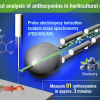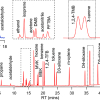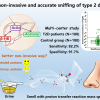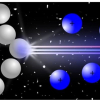Researchers at the European Molecular Biology Laboratory’s European Bioinformatics Institute (EMBL-EBI) have developed a new method for studying the targets and effects of cancer drugs using data from discovery mass spectrometry (MS) experiments. The study is published in Nature Communications.
Understanding the biological signalling pathways that regulate metabolism and gene expression is challenging, because so many things are happening at once. But this understanding is crucial for knowing how a drug will affect healthy and cancer cells. Protein kinases play a pivotal role in these pathways by turning certain proteins on and off in a process called phosphorylation—and because such pathways are often deregulated in cancer, kinase inhibitors are used as treatments.
To create models of signalling pathways and networks, the researchers used data from discovery mass spectrometry phospho-proteomics, a tool for studying the phosphorylation of thousands of proteins expressed by a cell at a certain time. Such models could be used to test the potential effect of a drug computationally.
“MS is a very powerful tool because it lets you look at activities like phosphorylation in a huge number of proteins at once”, says Julio Saez-Rodriguez, visiting group leader at EMBL-EBI. “But the data is typically very noisy, and random in terms of which of the tens of thousands of proteins in the cells it measures. It’s a little like trying to make a London tube map based on random CCTV photos.”
Until now, methods using MS phospho-proteomics data have put researchers on the right track in a general sense, for example pointing to groups of kinases that are likely to be active in a sample. The new method reconstructs pathways robustly, allowing researchers to ask more precise questions about how drugs affect proteins and pathways.
“Our method takes the noisy data from MS experiment, which is this large network with many interconnected cascades of kinase activities, filters the noise and integrates the data. This is done entirely in the context of what we know about kinases and their substrates, so you can see how things are connected”, explains Camille Terfve, an EMBL International PhD student in Julio’s lab. “Then you can compare what happens with the signal, for example if you use one kind of inhibitor or another. So, it can show what the drug is really doing to the system, beyond the direction you initially believed it would take.”
Thanks to a collaboration with the Cutillas lab at the Barts Cancer Institute, Queen Mary University of London, the researchers were able to use data from experiments using kinase inhibitors on breast cancer cells to demonstrate the method.
“There is a lot of knowledge out there about protein kinases and how they influence phosphorylation, and we’ve put this together with the enormous potential of MS to create and test logic models that provide a clear path for research”, says Julio. “MS produces so much data that’s very difficult to sift through—now, we can start to see the forest for the trees, and define which information is really important.”
“It’s really exciting to have found a way to make better use of MS data, and to use bioinformatics to make cancer research more efficient”, adds Camille.










